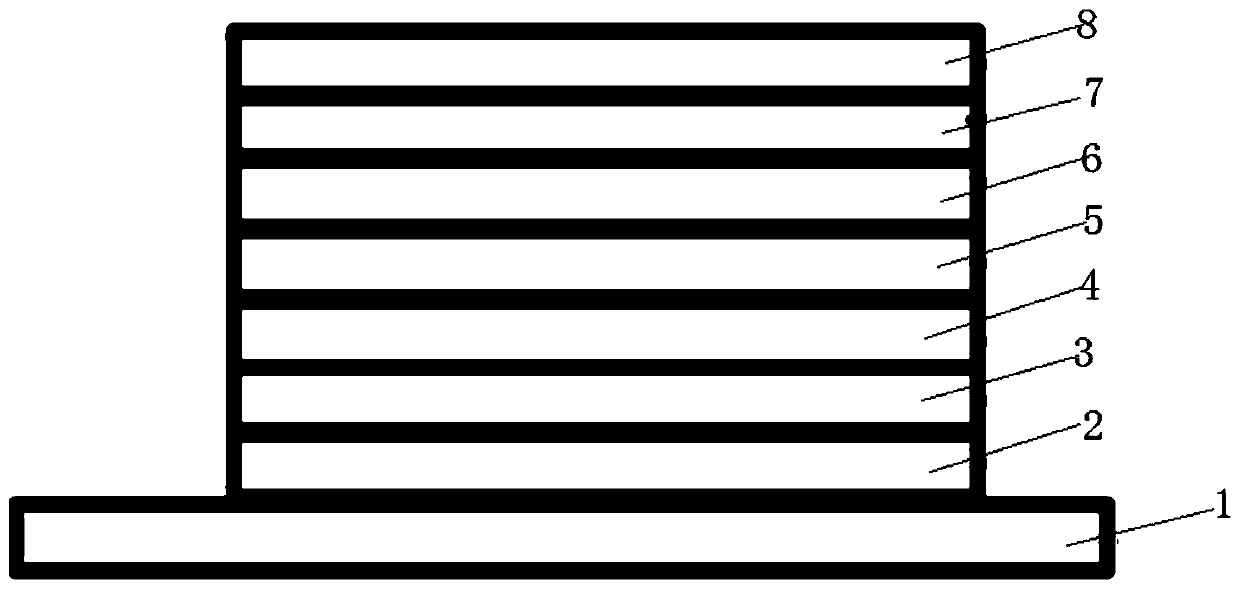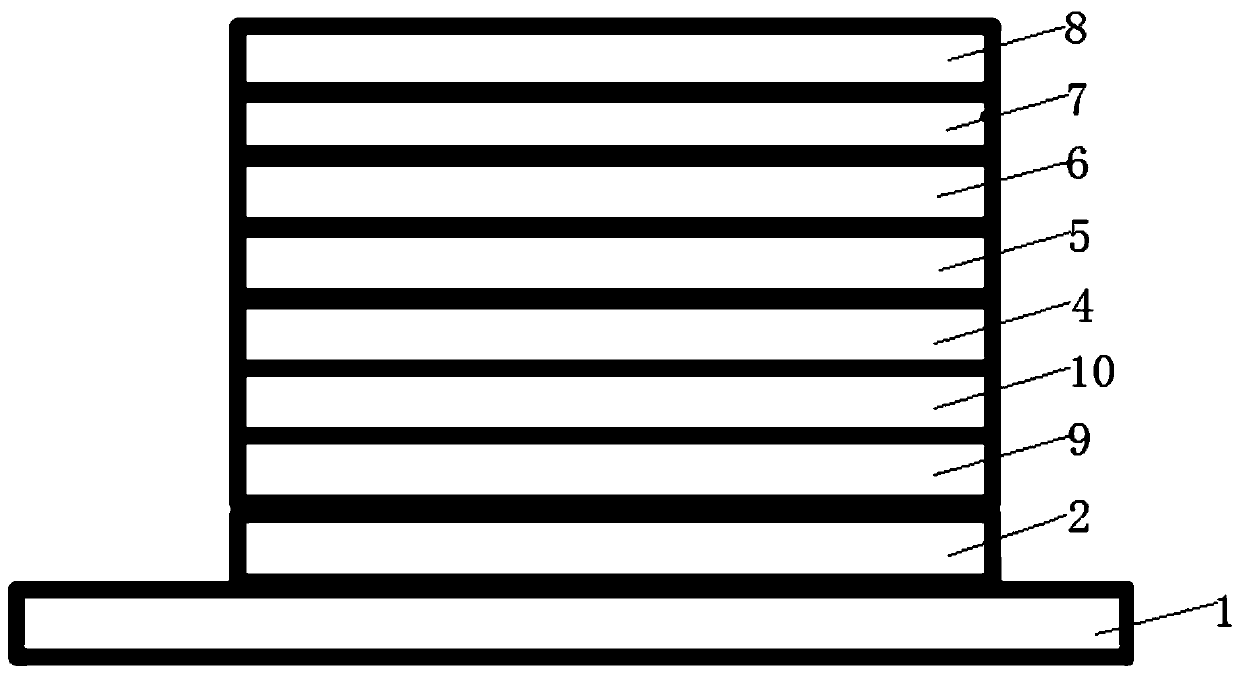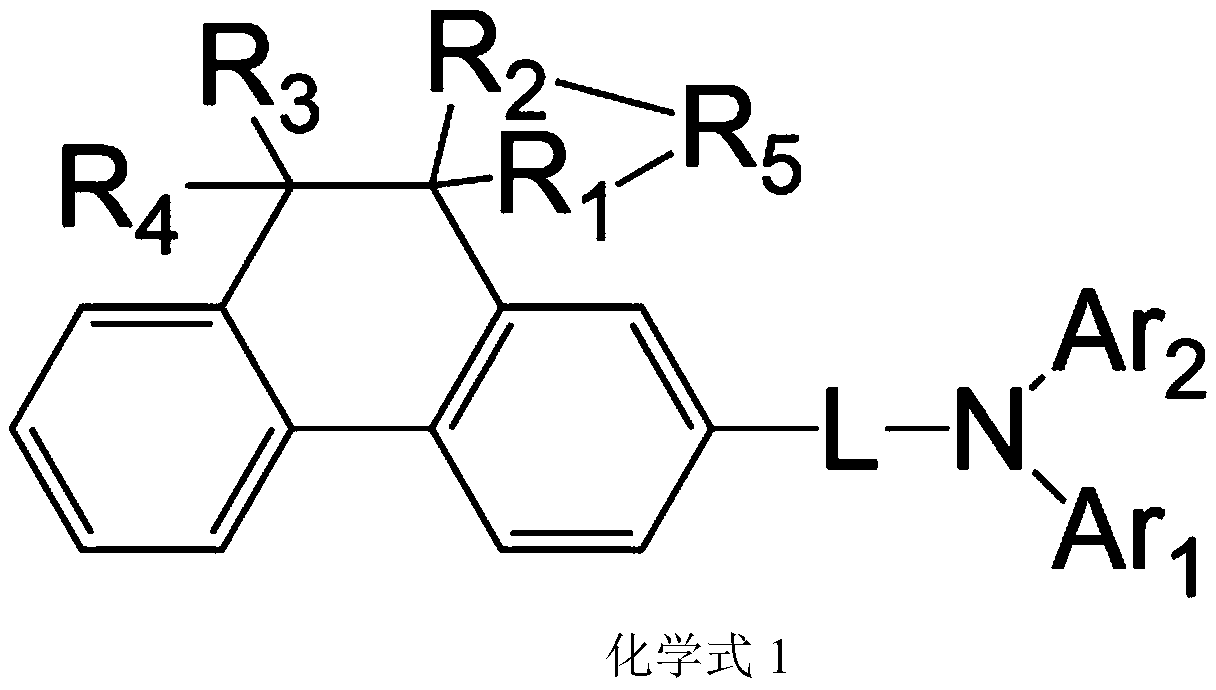Organic electroluminescence material and organic electroluminescence device with material
An electroluminescent material and luminescent technology, applied in the direction of luminescent materials, electrical solid devices, electrical components, etc., can solve problems such as large tension, lower performance of organic electroluminescent devices, broken bonds, etc., to achieve enhanced thermal stability, Excellent hole transport performance, effect of lowering driving voltage
- Summary
- Abstract
- Description
- Claims
- Application Information
AI Technical Summary
Problems solved by technology
Method used
Image
Examples
Embodiment 1
[0162] Embodiment 1: red organic electroluminescent device
[0163] The anode was prepared by the following process: the thickness was The ITO substrate (manufactured by Corning) was cut into a size of 40mm × 40mm × 0.7mm, and it was prepared into an experimental substrate with cathode, anode and insulating layer patterns by using a photolithography process, using ultraviolet ozone and O 2 :N 2 Plasma surface treatment was performed to increase the work function of the anode (experimental substrate) and to remove scum.
[0164] Vacuum vapor-deposit m-MTDATA on the experimental substrate (anode) to form a thickness of The hole injection layer (HIL), and NPB is evaporated on the hole injection layer to form a thickness of The first hole transport layer (HT1).
[0165] Compound 1 was vacuum evaporated on the first hole transport layer to form a thickness of The second hole transport layer (HT2).
[0166] Evaporate 4,4'-N,N'-dicarbazole-biphenyl (referred to as "CBP") as...
Embodiment 6
[0183] Embodiment 6: blue organic electroluminescent device
[0184] The anode was prepared by the following process: the thickness was The ITO substrate (manufactured by Corning) was cut into a size of 40mm × 40mm × 0.7mm, and it was prepared into an experimental substrate with cathode, anode and insulating layer patterns by using a photolithography process, using ultraviolet ozone and O 2 :N 2 Plasma surface treatment was performed to increase the work function of the anode (experimental substrate) and to remove scum.
[0185] Vacuum evaporated m-MTDATA on the experimental substrate (anode) to form a thickness of The hole injection layer (HIL), and the compound 6 is vacuum evaporated on the hole injection layer to form a thickness of The first hole transport layer (HT1).
[0186] Evaporate TCTA on the first hole transport layer to form a thickness of The second hole transport layer (HT2).
[0187] Using α,β-AND as the main body and doping 4,4'-(3,8-diphenylpyrene-1...
Embodiment 7-10
[0191] An organic electroluminescence device was fabricated by the same method as in Example 6, except that the compounds shown in Table 2 were each used when forming the first hole transport layer (HT1).
[0192] That is, Example 7 uses Compound 7 to make an organic electroluminescent device, Example 8 uses Compound 8 to make an organic electroluminescent device, Example 9 uses Compound 9 to make an organic electroluminescent device, and Example 10 uses Compound 10 to make an organic electroluminescent device. Light-emitting device, the device performance is shown in Table 2.
PUM
 Login to View More
Login to View More Abstract
Description
Claims
Application Information
 Login to View More
Login to View More - R&D
- Intellectual Property
- Life Sciences
- Materials
- Tech Scout
- Unparalleled Data Quality
- Higher Quality Content
- 60% Fewer Hallucinations
Browse by: Latest US Patents, China's latest patents, Technical Efficacy Thesaurus, Application Domain, Technology Topic, Popular Technical Reports.
© 2025 PatSnap. All rights reserved.Legal|Privacy policy|Modern Slavery Act Transparency Statement|Sitemap|About US| Contact US: help@patsnap.com



